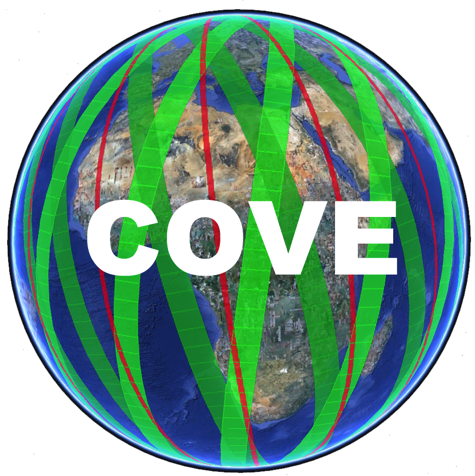Objectives and Applications
Earth resources, land surface, environmental monitoring, agriculture and forestry, disaster monitoring and assessment, ice and snow cover.
Full Name
Landsat 5
aka L5, Landsat-5
Mission Status
Mission complete
Mission Agencies
Launch Date
01 Mar 1984
Mission Links
EOL Date
05 Jun 2013
Orbit Type
Sun-synchronous
Orbit Period
98.9 minutes
Orbit Sense
Descending
Orbit Inclination
98.2 deg
Orbit Altitude
705 km
Orbit Longitude
Orbit LST
10:00
Repeat Cycle
16 days
NORAD Catalog #
International Designator
MSS (Landsat) - Multispectral Scanner |
TM - Thematic Mapper  |
| Category | Parameter | Instrument(s) |
| Atmosphere | Cloud type, amount and cloud top temperature | TM |
| Radiation budget | TM |
| Land | Albedo and reflectance | TM |
| Landscape topography | TM |
| Vegetation | TM |
| Surface temperature (land) | TM |
| Multi-purpose imagery (land) | MSS (Landsat), TM |
| Ocean | Ocean colour/biology | TM |
| Multi-purpose imagery (ocean) | TM |
| Snow & Ice | Snow cover, edge and depth | TM |
| Sea ice cover, edge and thickness | MSS (Landsat), TM |
Collection 2
Dec-2020 | CARD4L Landsat Collection 2 marks the second major reprocessing effort on the Landsat archive by the USGS that results in several data product improvements that harness recent advancements in data processing, algorithm development, and data access and distribution capabilities. - Read more |
GA Landsat Collection 3
Jul-2019 | The United States Geological Survey's (USGS) Landsat satellite program has been capturing images of the Australian continent for more than thirty years. DEA takes the hundreds of thousands of images, prepares them for Australian conditions, and makes adjustments to correct inconsistencies caused by changes in the atmosphere each time an image is captured (i.e. absence or presence of cloud cover), so that the data can be analysed to provide information about our changing continent. This corrected data set is known as Landsat Surface Reflectance, and it forms the basis for many of the other information products produced by DEA. Products derived from the surface reflectance collection include Fractional Cover, Water Observations from Space, the Intertidal Extents Model, and High and Low Tide Composites. - Read more |
Landsat Collection 1
Sep-2016 | Landsat Collection 1 consists of Level-1 data products generated from Landsat 8 Operational Land Imager (OLI)/Thermal Infrared Sensor (TIRS), Landsat 7 Enhanced Thematic Mapper Plus (ETM+), Landsat 4-5 Thematic Mapper (TM)*, and Landsat 1-5 Multispectral Scanner (MSS) instruments.
- Read more |
Landsat MSS ESA Archive
Jan-2013 | The Multi Spectral Scanner (MSS) instrument was carried aboard the Landsat 1 to
5 missions between 1972 and 2013. Global MSS acquisitions ended in 1999, even
though Landsat 4 and 5 were still active. The Multi Spectral Scanner (MSS) on the
Landsat-1 to 5 missions was an opto-mechanical scanning instrument (whiskbroom
technique, unidirectional operation) consisting of a double reflector-type telescope,
scanning mirror, filters, detectors, and associated electronics. The collection is composed of the products acquired at ESA receiving stations
(Fucino, Masplomas, Matera and Kiruna visibility masks). Access is provided through the ESA TPM scheme. - Read more |
Landsat 5 TM GTC Systematic Processing
Jan-2013 | The Thematic Mapper (TM) instrument was carried aboard Landsat 4 & 5, where it measured surface
radiance and emittance, lands cover state and change. The collection is composed of the products acquired at ESA receiving stations
(Fucino, Masplomas, Matera and Kiruna visibility masks) plus data from the campaign at Chetumal
(Mexico) and Bishkek (Kyrgyzstan), Libreville (Gabon) and Malindi (Kenya). Access is provided through the ESA TPM scheme. - Read more |
Selected IDN OpenSearch Results (search all 284 )
Unable to reach FedEO OpenSearch